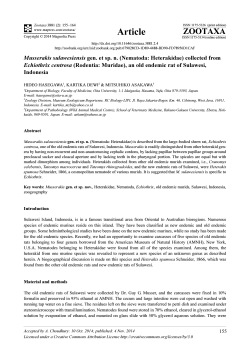
family Apiaceae draft 1
CATNIP classes, Acme Botanical Services 2013 Apiaceae (Carrot Family, Parsley Family) The Apiaceae or Umbelliferae is a family of about 3500 taxa, many of them in northern temperate regions. It includes many species of pertinence to humans, including food crops such as carrots (Daucus), cilantro (Coriandrum), and celery (Apium); spices such as anise (Pimpinella), dill (Anethum), and fennel (Foeniculum); and deadly poisons such as water hemlock (Cicuta maculata) and poison hemlock (Conium maculatum). The most distinctive feature of this family is the umbel, an inflorescence with all branches originating from a single point, somewhat in the manner of the spokes of an umbrella. Sometimes the inflorescence is compound, with multiple umbels originating from a single point; the secondary umbels are sometimes called umbellets. The flowers are consistently radially symmetrical, with 5 tiny Drawings from Montana Plant Life calyx segments, 5 small petals, 5 stamens and 2 styles. All (http://montana.plant-life.org/fam.html) are attached at the top of the ovary. The fruit is a schizocarp, a dry fruit that splits longitudinally into 2 single-seeded segments. With a few notable exceptions, the flowers of local Apiaceae are small and either white or yellow. Species are therefore often distinguished one from by vegetative characters. The leaves of most Apiaceae are alternate and compound; in many of our species, the leaf segments are linear (threadlike), but in some they are broad and conspicuous. Another vegetative feature to pay attention to is the involucre, the set of leaf-like bracts at the base of the umbel; the counterpart under the umbellet is the involucel. Pope’s sand-parsley (Ammoselinum popei), typical of our numerous tiny Apiaceae. Texas daucosma (Daucosma laciniatum), an Edwards Plateau endemic with well developed involucres and involucels. Texas tauschia (Tauschia texana), a yellow-flowered Texas endemic found in riparian woodlands just south of our area.
© Copyright 2025











